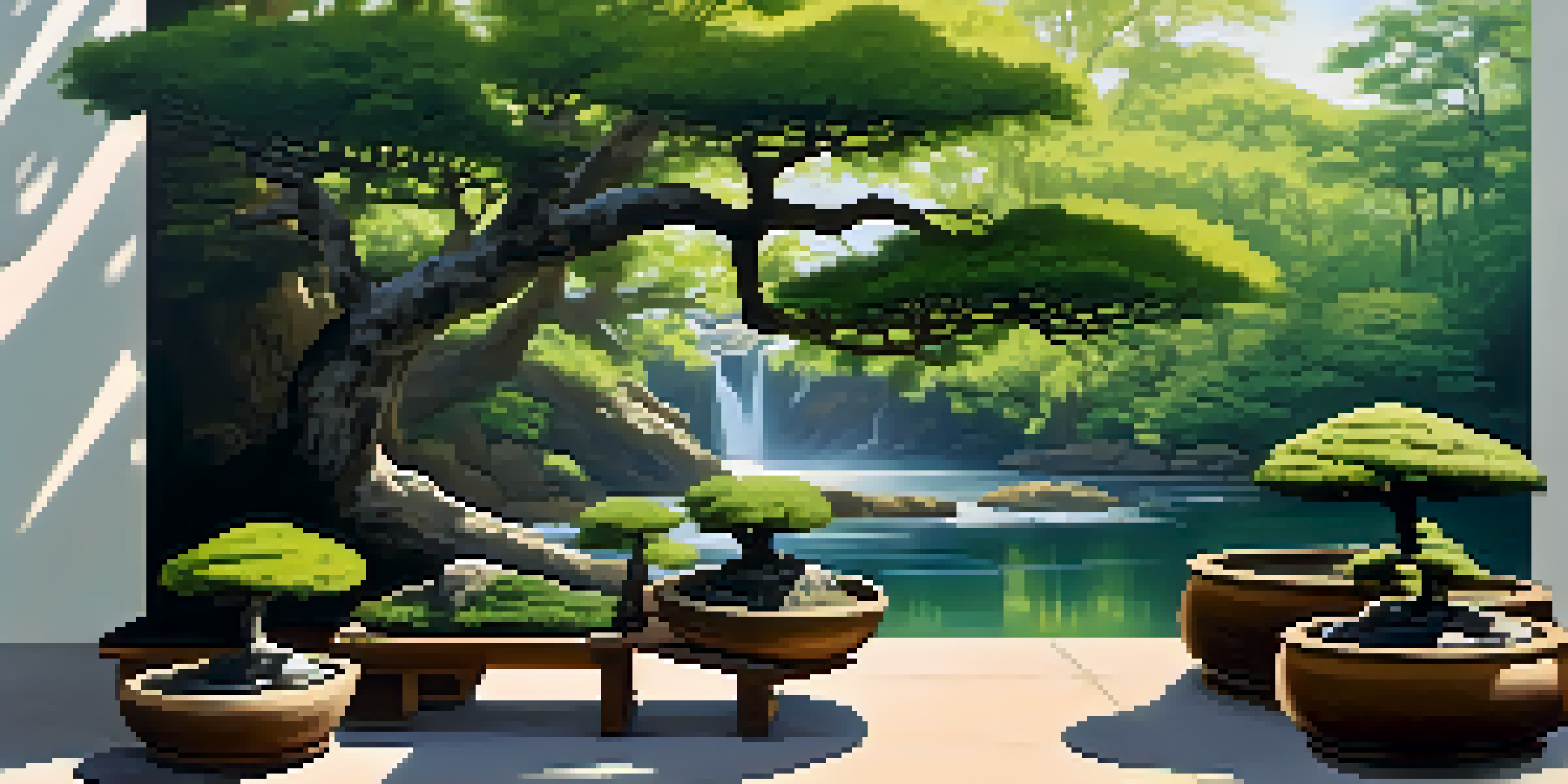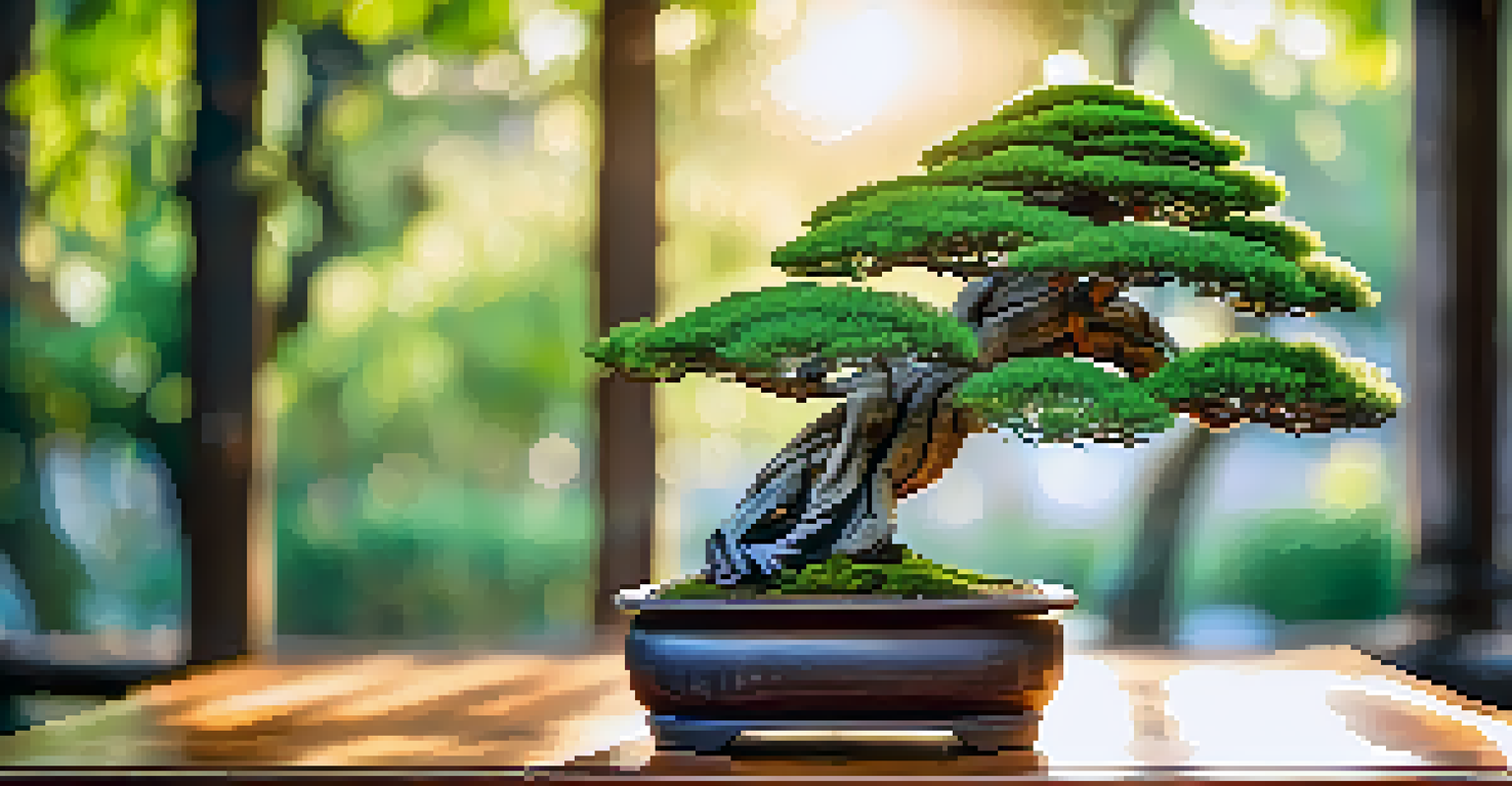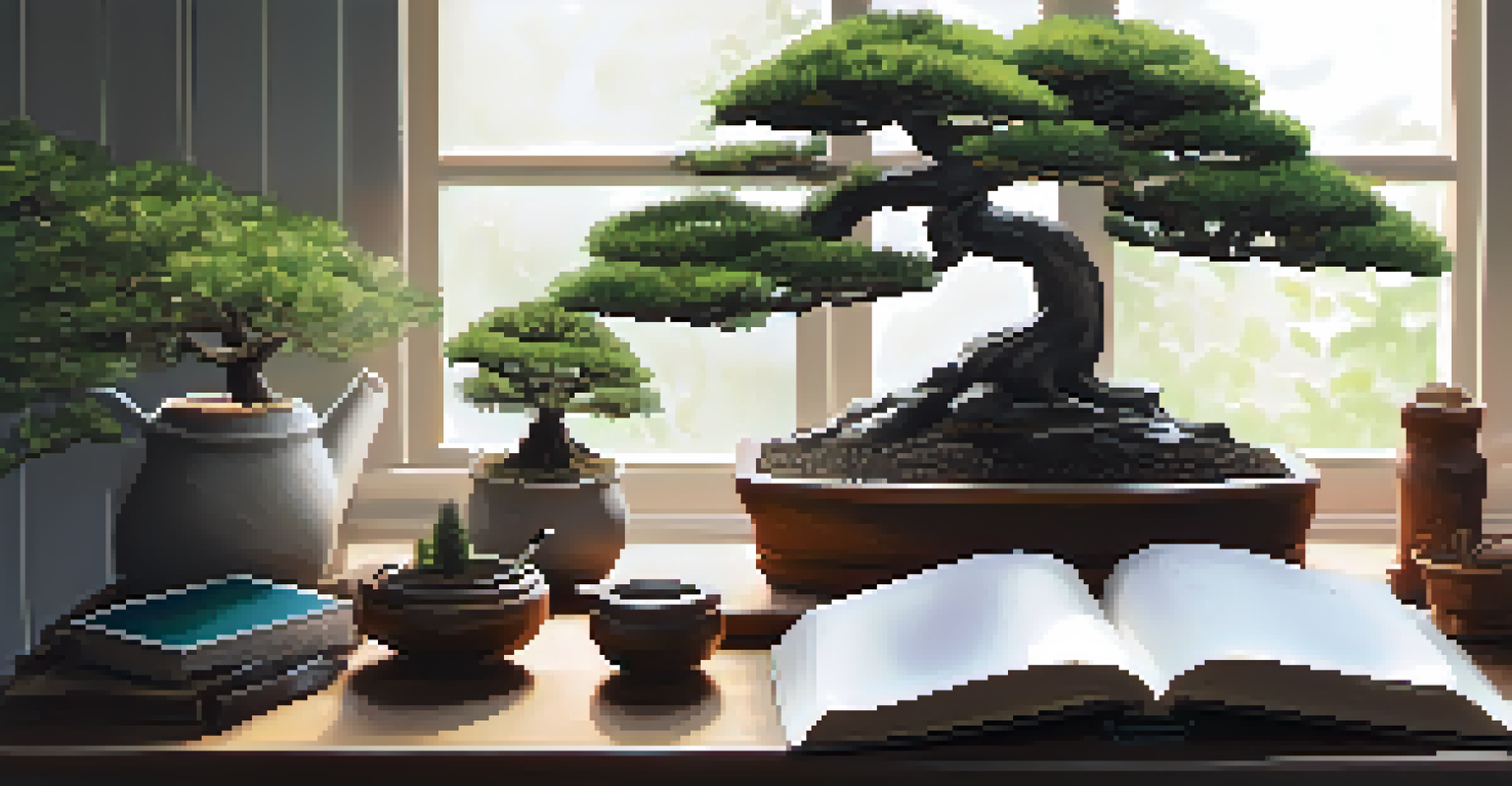Bonsai Fertilization: A Guide to Feeding Your Trees

Understanding the Importance of Bonsai Fertilization
Fertilization is vital for bonsai trees, as they are often grown in limited soil conditions. Unlike regular trees that spread their roots wide, bonsai roots are confined to a pot, which means nutrients can be quickly depleted. By providing the right nutrients, you not only support healthy growth but also enhance the aesthetic appeal of your bonsai.
To plant a garden is to believe in tomorrow.
Think of it like fueling a car; without the right fuel, the vehicle cannot run efficiently. Similarly, bonsais need a balanced supply of nutrients to thrive. This includes nitrogen for growth, phosphorus for root development, and potassium for overall health and disease resistance.
In essence, fertilizing your bonsai is not just about keeping it alive; it's about nurturing it to reach its full potential. A well-fed bonsai can showcase vibrant leaves, strong branches, and an overall healthier appearance.
When to Fertilize Your Bonsai Trees
Timing is crucial when it comes to fertilizing bonsai trees. Generally, the best time to fertilize is during the growing season, which typically runs from spring to early autumn. This period allows your bonsai to absorb the nutrients effectively as it actively grows.

However, there are exceptions. For instance, if you notice that your bonsai is not growing as expected, a mid-season boost might be necessary. Additionally, you should avoid fertilizing during the dormant winter months, as the tree is not in a position to utilize these added nutrients.
Bonsai Needs Regular Fertilization
Fertilization is crucial for bonsai trees to thrive since their confined roots quickly deplete nutrients.
By aligning your fertilization schedule with your bonsai's growth cycle, you can ensure that your tree receives the nutrients it needs right when it needs them most.
Choosing the Right Fertilizer for Your Bonsai
Selecting the appropriate fertilizer for your bonsai can seem overwhelming due to the variety of options available. Organic fertilizers, such as fish emulsion or compost, are excellent choices as they release nutrients slowly and improve soil structure. On the other hand, synthetic fertilizers provide a quick nutrient boost but can lead to salt buildup if overused.
The best time to plant a tree was twenty years ago. The second best time is now.
A balanced fertilizer, often labeled as NPK (Nitrogen-Phosphorus-Potassium), is essential. A common ratio to look for is 10-10-10, which ensures your bonsai receives an equal mix of these critical nutrients. However, your specific bonsai species might have unique needs, so researching your tree type can guide your choice.
Ultimately, the right fertilizer is one that meets your bonsai's specific nutritional needs while promoting healthy growth without causing harm. Always read the instructions to avoid over-fertilization.
How to Apply Fertilizer to Your Bonsai
Applying fertilizer to your bonsai requires careful attention to ensure the best results. Start by diluting liquid fertilizers in water, as this allows for even distribution and prevents root burn. For granular fertilizers, sprinkle them evenly over the soil surface, then water it in to help the nutrients penetrate the soil.
It's essential to avoid applying fertilizer directly to dry soil, as this can lead to uneven nutrient distribution and potential root damage. Instead, water your bonsai a day before fertilizing to ensure the soil is moist and ready to absorb the nutrients.
Timing is Key for Fertilization
The best time to fertilize bonsai is during the growing season, typically from spring to early autumn.
Remember, moderation is key. Over-fertilizing can harm your bonsai, causing leaf burn or stunted growth. Regularly monitoring your tree's health will help you adjust your fertilization practices accordingly.
Signs Your Bonsai Needs Fertilization
Recognizing when your bonsai needs fertilization can be a game-changer in your care routine. Common signs include yellowing leaves, stunted growth, or a lack of new growth during the active season. If you notice your bonsai looking lackluster, it may be time for a nutrient boost.
Another indicator is the frequency of leaf drop. If your bonsai is shedding leaves more than usual, this could signal a nutrient deficiency. Additionally, observe the soil; if it appears depleted or has a crusty top layer, it might be a sign that your tree is hungry for nutrients.
By staying in tune with your bonsai's appearance and growth patterns, you can effectively determine when it's time to fertilize, ensuring it thrives under your care.
Common Mistakes in Bonsai Fertilization
Even seasoned bonsai enthusiasts can make mistakes when it comes to fertilization. One common error is using too much fertilizer, which can lead to root burn and other health issues. Remember, a little goes a long way, and it’s always better to err on the side of caution.
Another mistake is fertilizing during the dormant season. Your bonsai doesn't need additional nutrients when it's not actively growing, and doing so can waste resources and harm the tree. It's crucial to align your fertilization schedule with your bonsai's growth cycle.
Choose the Right Fertilizer
Selecting the appropriate fertilizer, whether organic or synthetic, is essential to meeting your bonsai's specific nutritional needs.
Lastly, neglecting to water your bonsai after fertilization can prevent the nutrients from reaching the roots. Always follow up with water to ensure your bonsai gets the full benefit of the fertilizer.
Conclusion: Nurturing Your Bonsai Through Fertilization
In conclusion, fertilization is a fundamental aspect of bonsai care that can greatly influence the health and appearance of your trees. By understanding the right timing, choosing the appropriate fertilizers, and applying them correctly, you set the foundation for vibrant growth. Regularly monitoring your bonsai's health will guide your fertilization practices and help you avoid common pitfalls.
Remember, a well-fed bonsai is a happy bonsai. Just like tending to a garden, it requires attention and care to flourish. With the right approach, your bonsai can become a stunning centerpiece in your home or garden.

Embrace the journey of nurturing your bonsai, and enjoy watching it thrive as you learn more about its unique needs and characteristics.